100 Years of the RAF, Spitfire Mk Vb, 81 Squadron RAF Hornchurch, June 1942 “FL*A” / BM-461 Tamiya 1/48
This article is part of a series:
- 100 Years of the RAF, No. 19 Squadron circa August 1938, Duxford, UK 1/48 Airfix Spitfire Mk I “early”
- 100 Years of the RAF, 541 Squadron late 1944, Spitfire PR MK XIX, 1/48 Airfix
- 100 Years of the RAF, No. 601 Squadron, Egypt November 1942, 1/48 scale Tamiya 61035 Spitfire Mk Vb
- 100 Years of the RAF, No. 222 Squadron RAF Hornchurch, September 1940, Spitfire Mk Ia, “ZD-R” Tamiya 1/48
- Spitfire Mk Vb Tropical, EP-706 “T*L” No. 249 Squadron as flown by George Beurling at Malta
- 100 Years of the RAF… Alan Deere’s Spitfire Mk I “Kiwi”, No. 54 Squadron Tamiya 1/48
- 100 Years of the RAF, Spitfire Mk Vb, 81 Squadron RAF Hornchurch, June 1942 “FL*A” / BM-461 Tamiya 1/48
This one is hot off the press...
I finished it up just in time to make the deadline for the 100 Years of the RAF Group Build that was the brain child of Paul Barber. @yellow10
Thanks Paul !
I also want to take this opportunity and thank another person who's helping hand and expert knowledge made all the difference during my Spitfire builds.
Thanks also go out to Paul Nash. @white4freak
He provided a set of spray masks and answered lots of questions about the different colors in use on these planes.
I wanted to build this plane for the simple fact it had the letters "FL * A" on the side of the fuselage. That just happens to be the initials for my home state of Florida, here in the USA.
This sounds like a selfish reason, (and probably is), but this particular Spitfire has the later Gray / Dark Green camouflage. I needed a Spitfire in this color combination to better round out the collection of built Spitfires, since I don't have one painted in these colors.
It was built right out of the box, nothing fancy and no aftermarket items. I used rail road dry transfers for the fuselage serial numbers "BM-461".
The fuselage codes of "FL-A" were made by using tape. These markings are sprayed on using "Sky". The spinner and fuselage band were also sprayed in the same color.
This is the Tamiya Mk Vb kit that is based on the older original Mk I issue. This kit was an absolute joy to build. It's a simple and relaxing kit and I enjoyed every minute building it. The fit is spot on even after all these years. No muss, no fuss... There has been a few others online that claim the old girl is a little "plump" on the back side (of the fuselage that is), and her wing outline is off just a tad. She still looks like a Spit to me...

The origins of this kit go back to 1994 when it was first released. Back then it was top of the line...The molds have held up rather well as no flash was present anywhere on the plastic parts.
This one was painted using Model Master enamels. It was built as part of a series of various Spitfires. 12 were originally planned for, but I only managed to complete 7. Here's a link to the build journal should you be interested to see what went into building these planes.
The leading edge Yellow Identification Stripes were also painted on, using Model Master enamel.
Weathering was kept to a minimum, as these planes were actually cared for rather well, and these Spitfires were still fairly new during the time frame of June 1942.
A Tamiya weathering deck was used to place some exhaust stains on the side of the fuselage, and very sparingly to create engine oil "smudges" in various places. The exhaust manifolds also received slight weathering using the Tamiya decks to help represent a "Burnt Stainless" color.
I used "Dull Aluminum" Bare Metal Foil for the wheel hubs, and "Ultra Bright Chrome" for the landing gear oleo struts. A chrome paint pen was used on the pitot tube.
The unit information was copied directly from Wikipedia.
First World War
No. 81 Squadron Royal Flying Corps was formed on 7 January 1917 at Gosport as a training unit, but unlike many other Training squadrons during the First World War, it was not mobilized for active service and was disbanded on 4 July 1918.
The squadron reformed 25 November 1918 with all Canadian personnel and was officially known as No. 1 Squadron, Canadian Air Force until disbanding again on 1 February 1920
Second World War
On 1 December 1939 the Communications Squadron at Mountjoie, France, operating de Havilland Tiger Moths, was re designated No. 81. It was disbanded on 15 June 1940, when the advancing German forces forced its withdrawal to the United Kingdom.
Following the German Invasion of the Soviet Union, it was decided to send a wing of Hawker Hurricane fighters to assist the Soviet war effort, and No. 81 Squadron reformed at RAF Leconfield on 29 July 1941 as part of No. 151 Wing RAF. In September it flew its Hurricanes off the carrier HMS Argus, deploying to an airfield near Murmansk. It flew both defensive sorties and escort missions for Soviet bombers, while carrying out its principal role of training Soviet pilots on the Hurricane. After a few weeks of operations the Hurricanes were handed over to the Soviets and the Squadron left to return to the UK at the end of November.
When it arrived back at the UK, it was re-equipped with Supermarine Spitfires at RAF Turnhouse, Edinburgh, being declared operational on 1 February 1942. It moved to RAF Hornchurch near London in May, flying its first operation, escorting Hurricanes bombing Bruges on 1 June.
At the end of October the Squadron moved to Gibraltar and on 8 November, 19 Spitfires moved to the newly captured airfield at Maison Blanche, Algiers. Following the German surrender in North Africa, it moved to Malta in preparation for the Invasion of Sicily. It then moved to Italy in September but was withdrawn to Egypt in November to prepare for deployment to the Far East.
During operations in the Mediterranean, they found their most frequent opponents were Jagdgeschwader 53 who had an ace of spades motif on their aircraft. As the squadron commander considered that they had 'bested' their enemy, they took the motif and started applying it to their aircraft.
It arrived at Alipore, India in December 1943, equipped with more modern Spitfire VIII, starting operations in January, flying fighter and ground attack missions in support of the Second Battle of Arakan, and the Battle of Imphal, as part of the RAF Third Tactical Air Force. It was withdrawn to Ceylon in August and disbanded on 20 June 1945. On the same day 123 Squadron was renumbered 81 Squadron but its Thunderbolts did not become operational before the war ended. In October, the squadron was sent to Java during the Indonesian War of Independence, flying tactical reconnaissance duties and covering Allied road convoys, while attacking nationalist held airfields and ammunition dumps.
On 30 June 1946, the squadron was again disbanded.
Postwar reconnaissance operations
On 1 September 1946, No. 684 Squadron, the Far east photo-reconnaissance squadron flying de Havilland Mosquito PR.34s and Spitfire PR.19s, was renumbered as No. 81. It added fighter-reconnaissance Spitfires in August 1947, when it became involved in the Malayan Emergency. Conversion to Meteor PR.10s began in September 1953, with the Squadron flying the RAF's last operational Spitfire mission on 1 April 1954 and the last operational RAF Mosquito mission on 15 December 1955. It received a few Percival Pembrokes for survey operations in 1956 and began converting to the English Electric Canberra in 1958, flying its last Meteor mission on 7 July 1961, retaining the Canberra until the Squadron was disbanded as part of Britain's withdrawal from bases East of Suez on 16 January 1970.
The Squadron was based at RAF Seletar and RAF Tengah in Singapore from 1947 to 1970 with a small detachment at RAF Kai Tak in Hong Kong from 1947 to 1954
I was able to find a few pictures of the actual plane in flight. "FL*A" is the farthest away in these next two photos that were taken in June of 1942.
I took this last picture in color and converted it into Black and White to see how it looks as a comparison...
This was a wonderful learning experience for me during this Group Build. It was a very rewarding experience. If you haven't tried one of the group Builds, give it a go... you just might like it... and learn something while you're at it.
As always,
"Comments are encouraged".
Thanks !
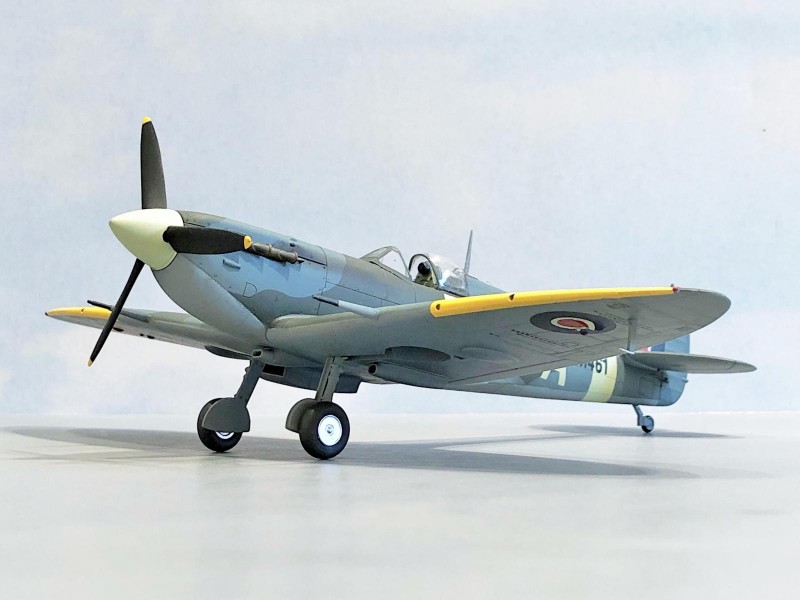
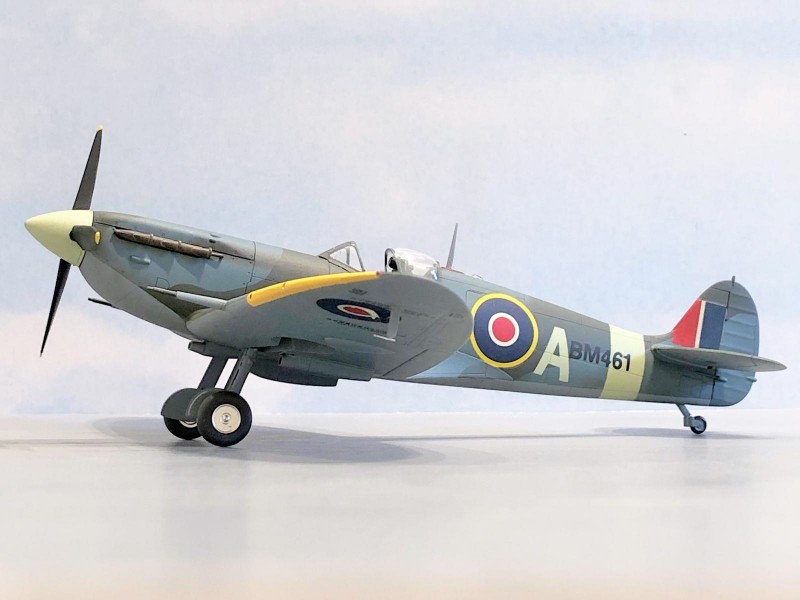
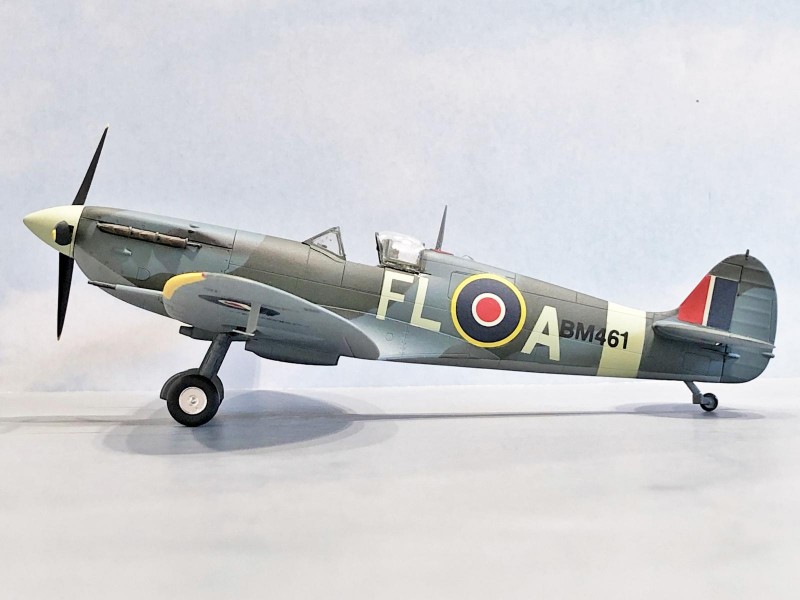
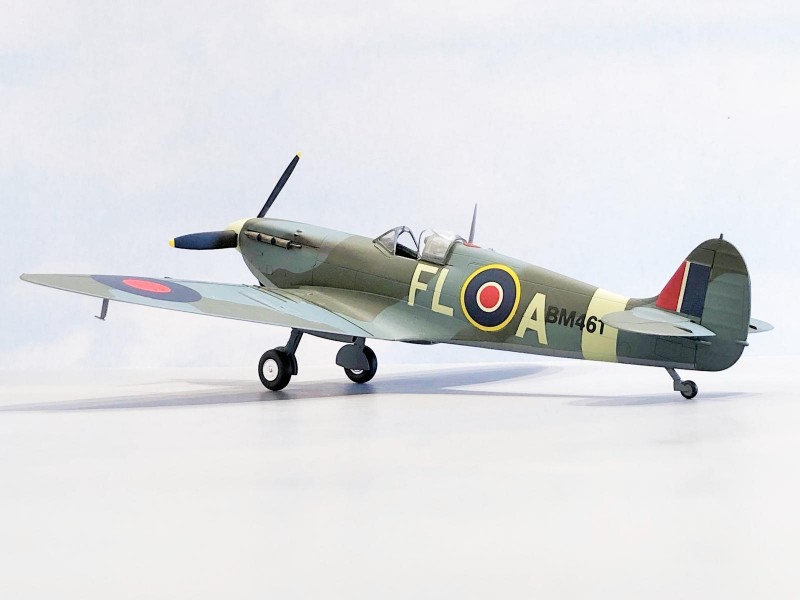
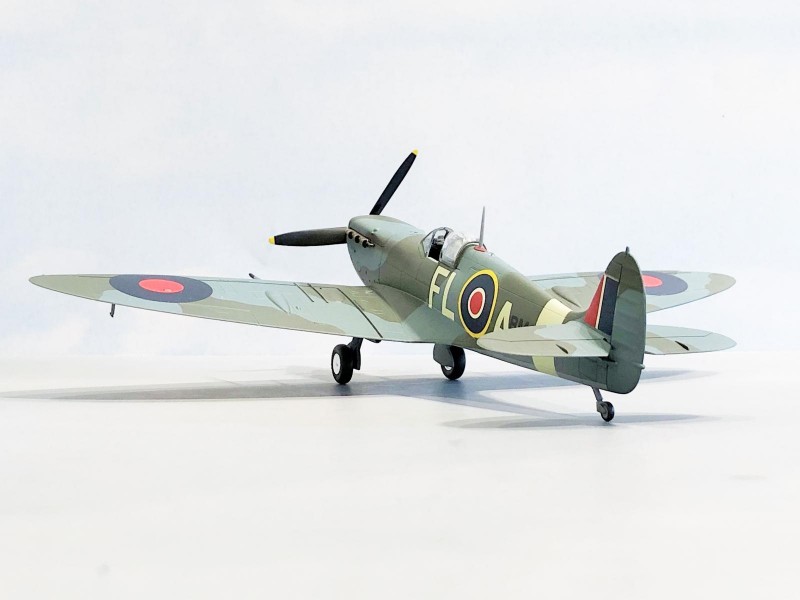
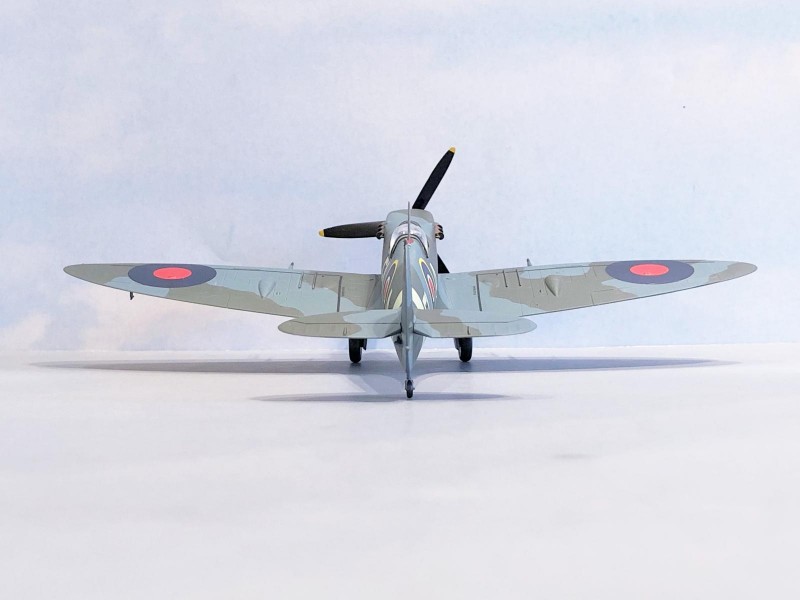
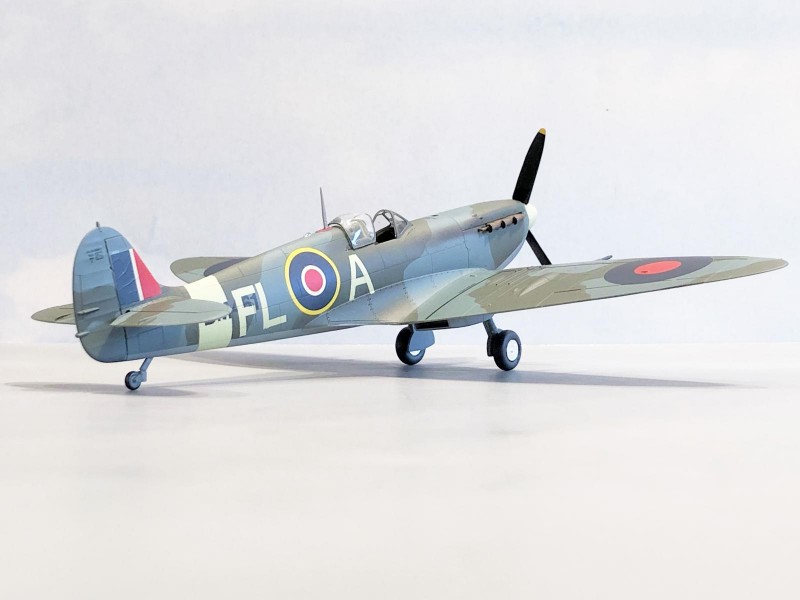
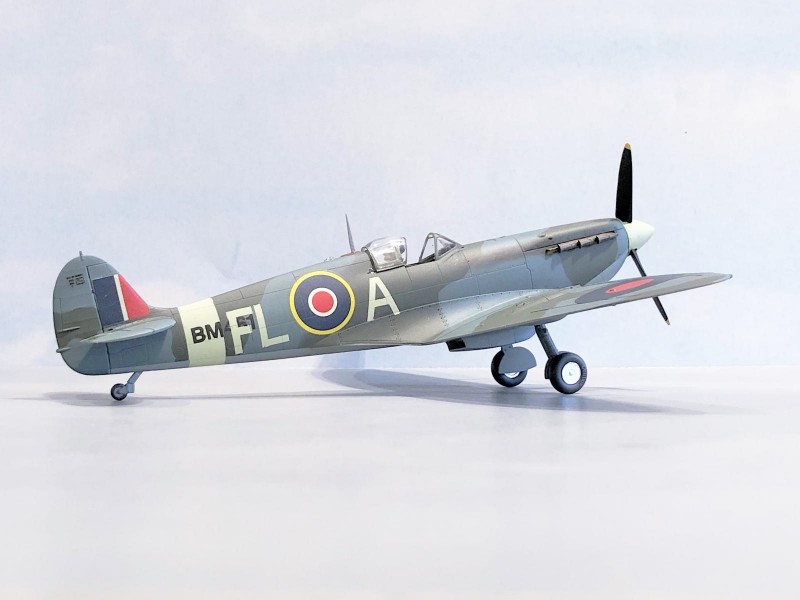
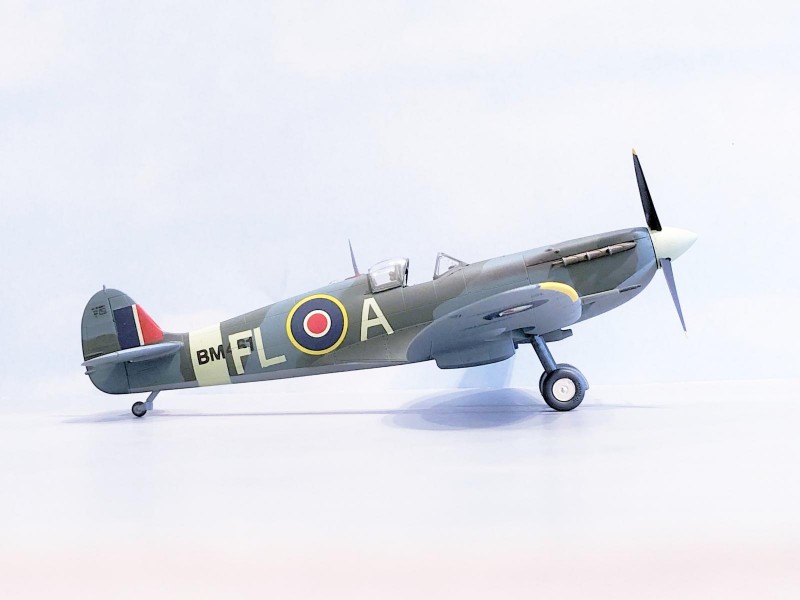
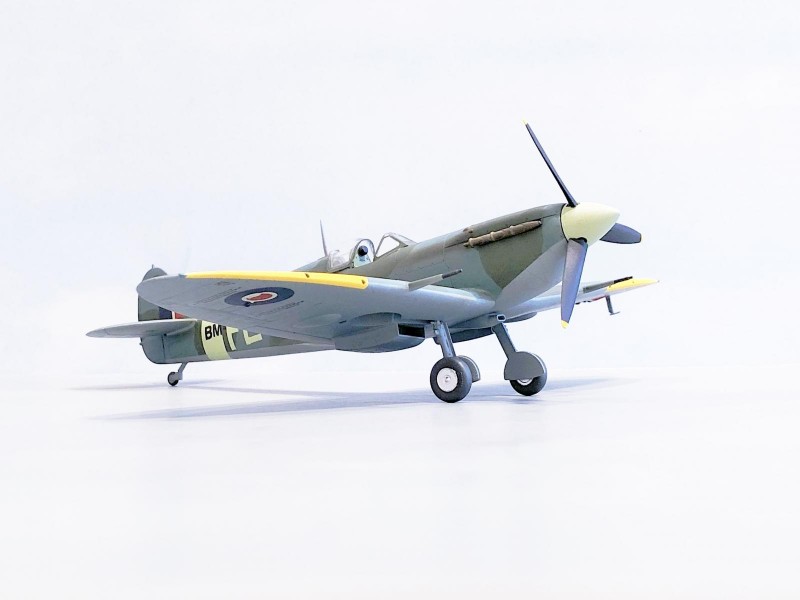
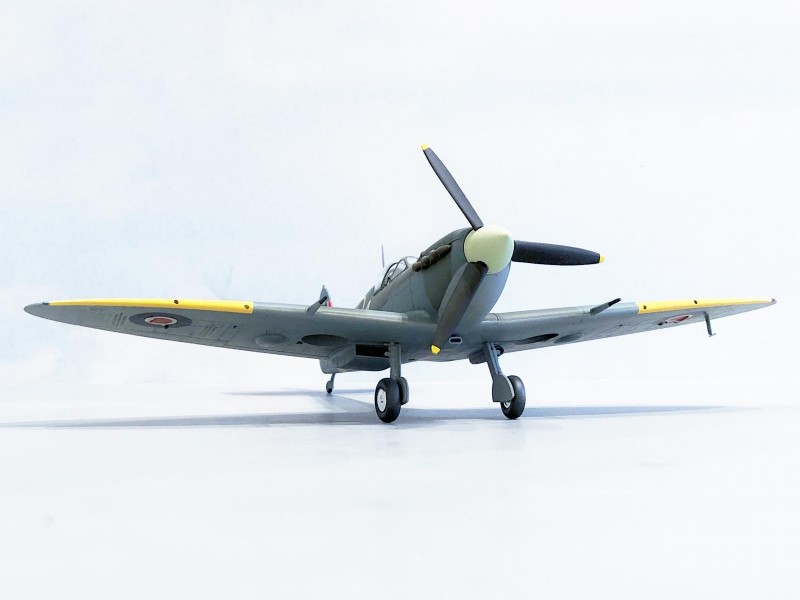
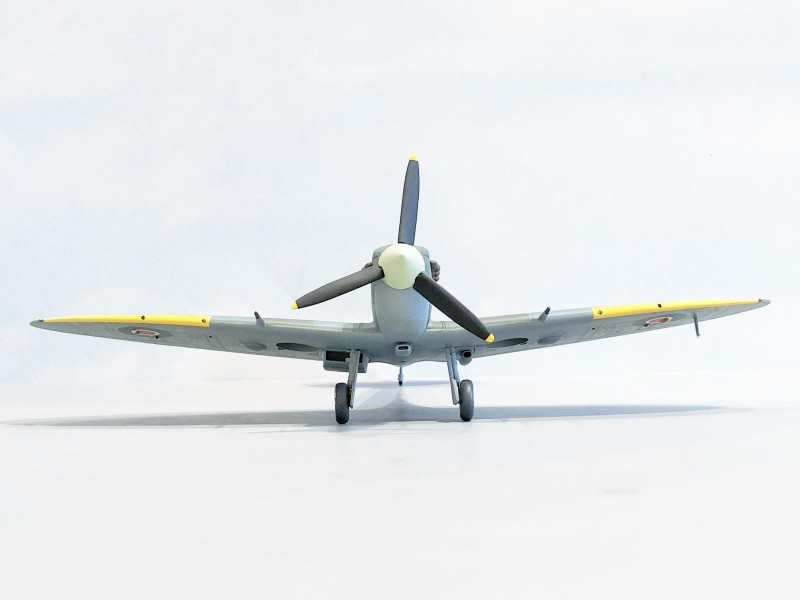
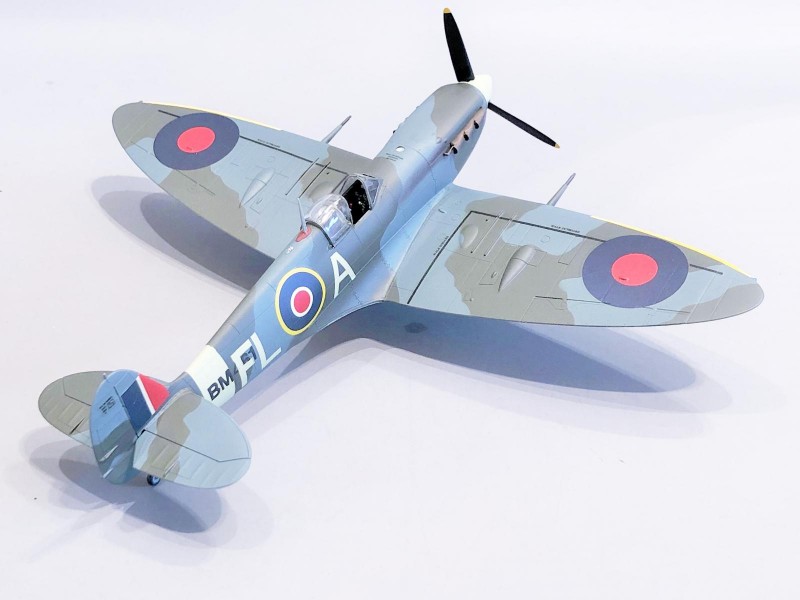
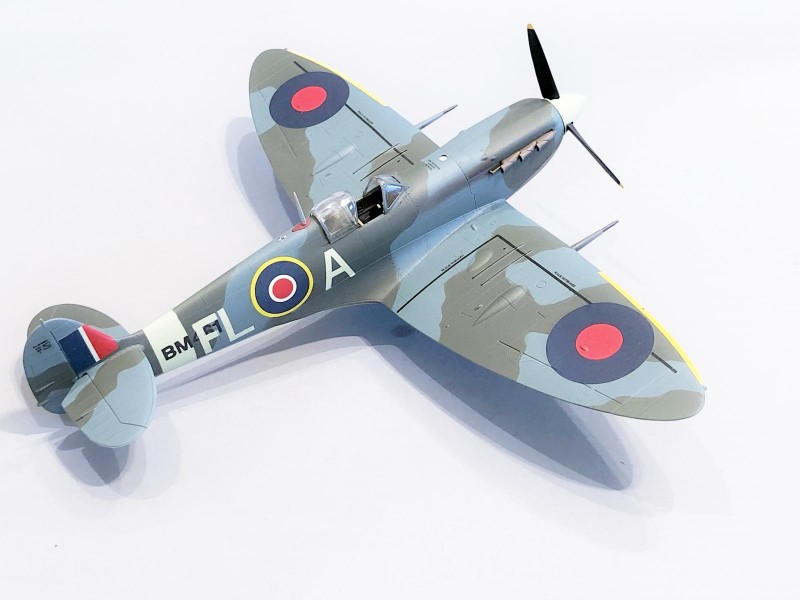
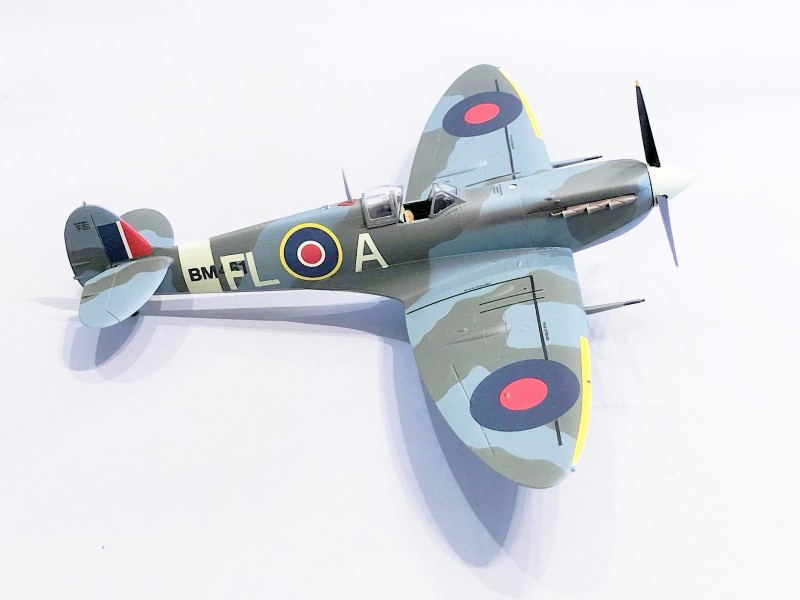
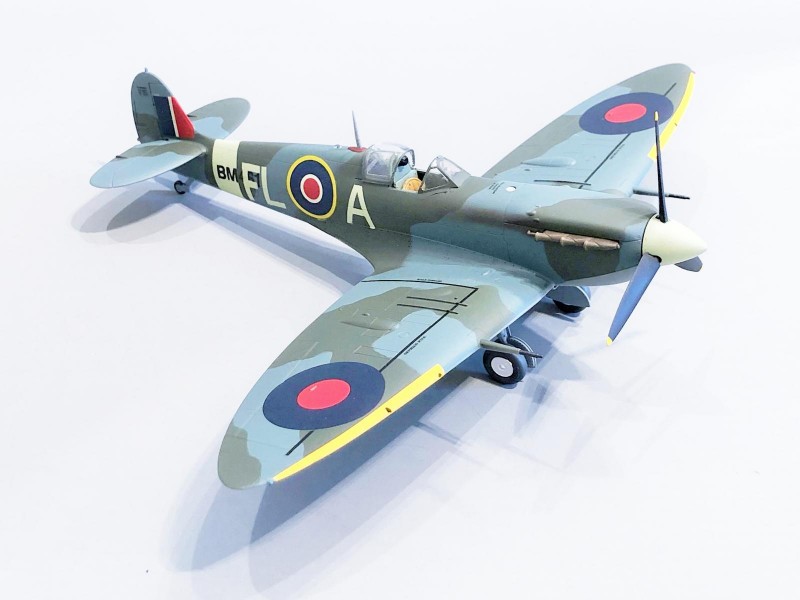
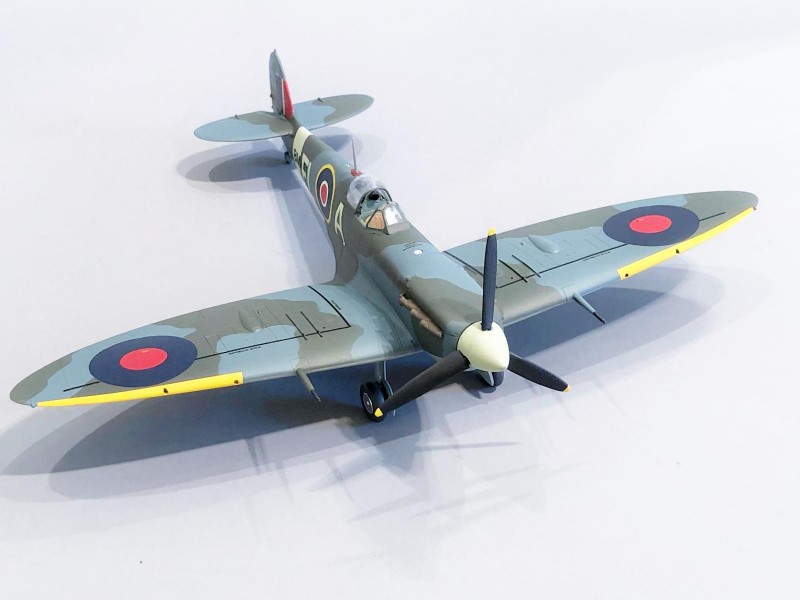
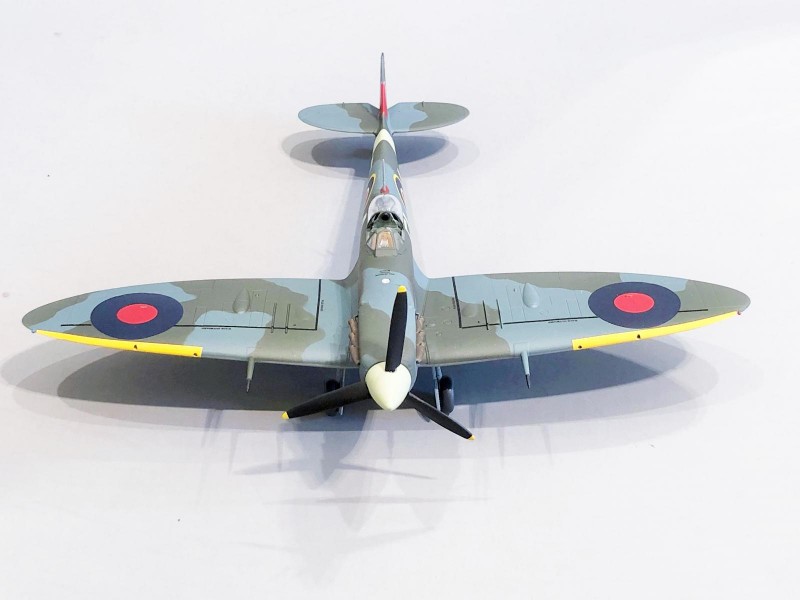
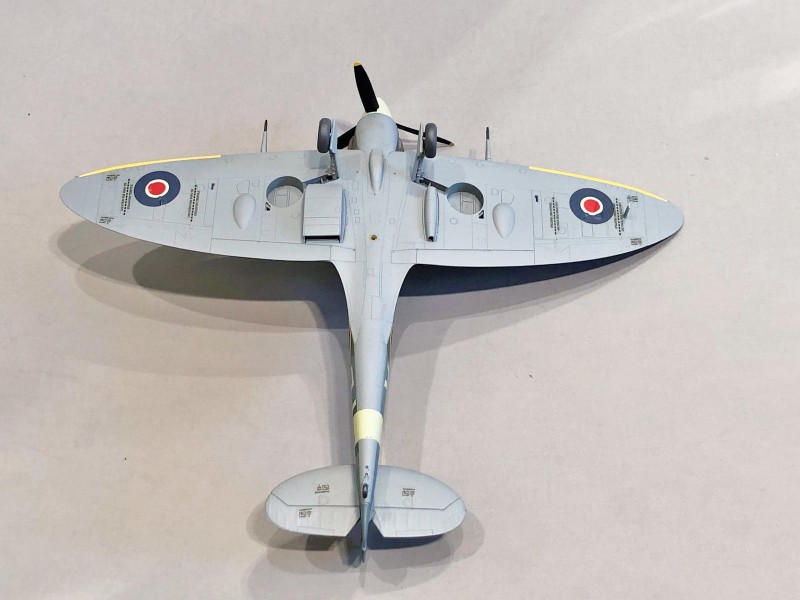
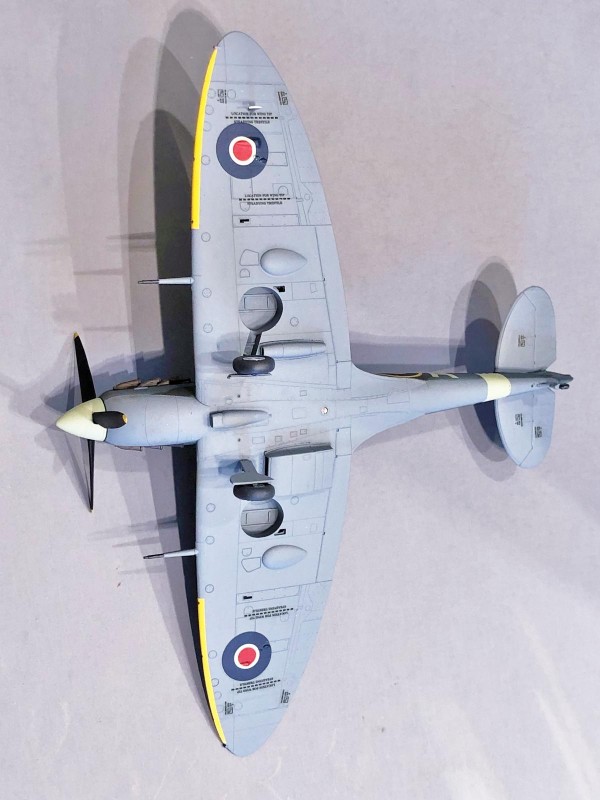
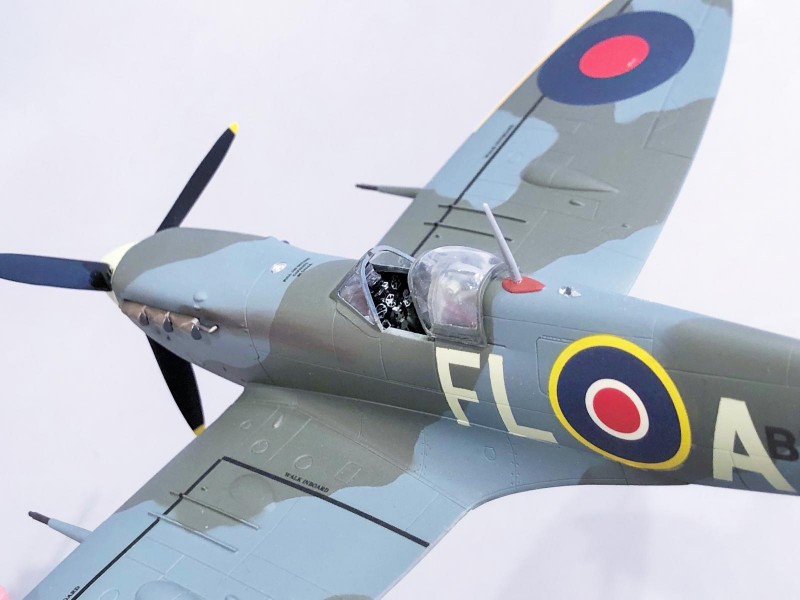
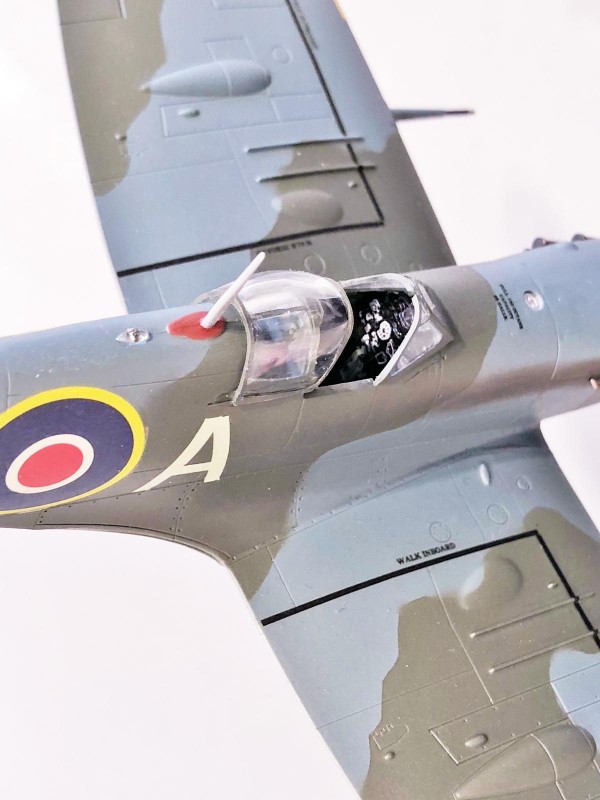

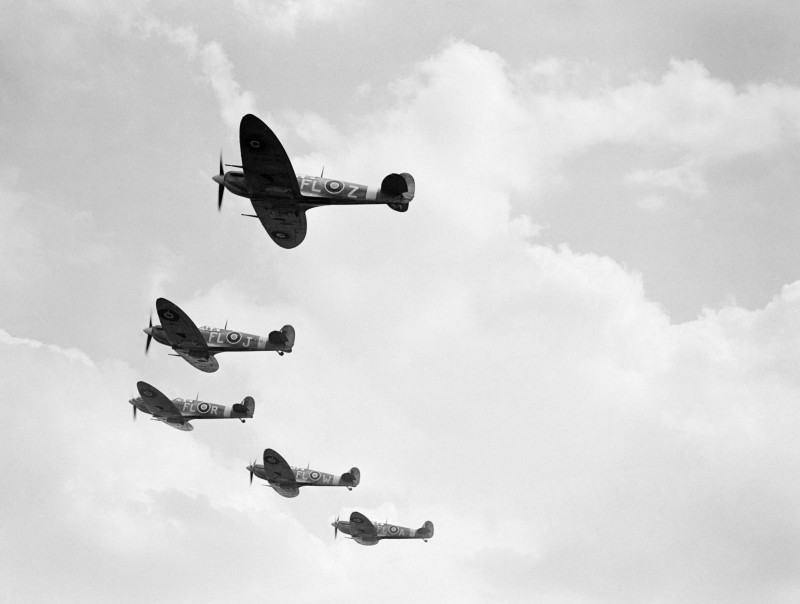
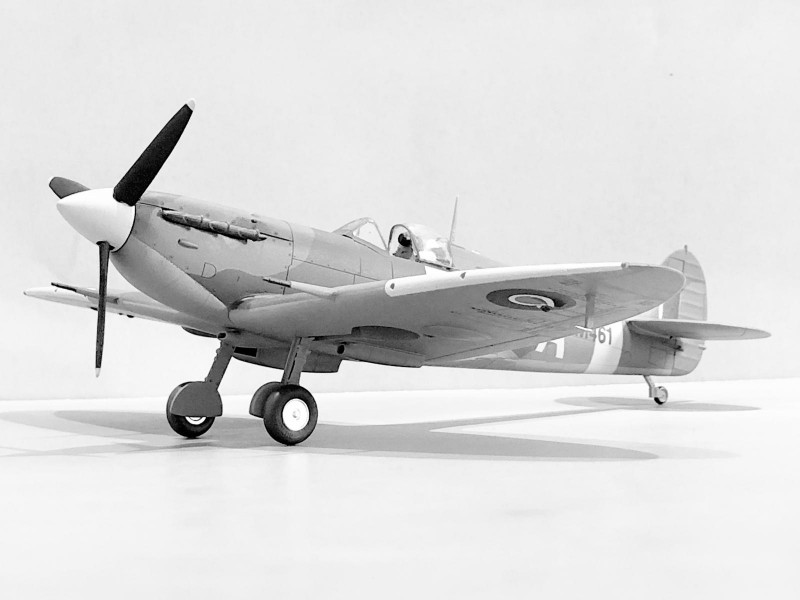
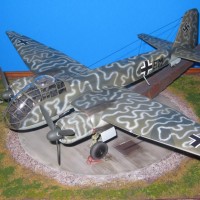
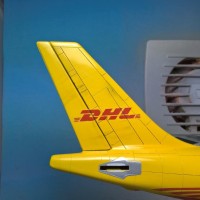
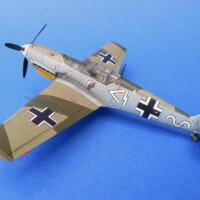
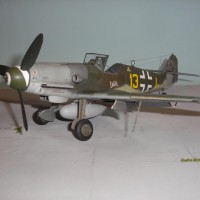
Outstanding build (as always) and presentation, Louis...good work !
Thanks buddy ! It's good to hear from you...
Another winner, Louis!
Thank you John !
That's one beautiful Spitfire, Louis. Well done.!
I appreciate the compliments Robert.
What a crisp build, Louis! The camo looks very vivid and I love the how the subtle weathering adds to the lines of the aircraft.
Thank you very much Thiago. The Spitfire is a beautiful plane and has excellent lines to it naturally. I didn’t want to make it look too beat up. It’s not a Corsair or Wildcat in the Solomon Islands. These last two types I mentioned would really look more natural with a lot of excessive weathering and dirt.
Thanks again !
This is really excellent, Louis, you've gotten it just right.
Thank you very much Tom C.
That's a really pretty Spitfire Louis, nicely done. Great paint job and just enough weathering as well. I personally don't enjoy doing lots of weathering on my builds and try to keep them rather clean. You've done a great job here. All aircraft had to be new at some point, right?
Thanks Tom B .
I was fortunate that Paul Nash sent me a set of patterns to use as masks for my Spitfire builds. I saved a master of the “A” and the “B” scheme for future use on the remainder of the Spitfires in the stash. These masks are what makes the difference. Without them I don’t think it would have looked as nice.
I like to add just a little dirt and grime on my planes unless it’s a subject from the South Pacific or Africa. Then they get a lot more.
Like you said... they’re new at some point.
Thanks again buddy.
Congratulations Louis a great effort - she looks superb!
Thanks David for the kind words. I sincerely appreciate this.
simply stunning Louis as usual
Thanks Bob !
A great Spit Louis!
Just beautiful, Louis! The finish on this one is as good as anything I've seen. I like this mark best of all the spits.
Your spitfires have driven the group along and you have been a huge influence on all the work of the members - thank you for everything, my friend!
My favourite? I did say I'd pick one - and it is a tough call. It may surprise you but I'd go for Beurling's plane. It is not the prettiest scheme a plane ever wore, and I know Malta spits are not easily nailed down in terms of actual colours. I like to think of yours and Bogdan's as a before and after (factory to field) story. It may well be that this was the result of over-painting in situ. And you have nailed the feel of the dust and the overcoat!
All of that said the subtle colours on this cracker run it very very close - you have nailed this scheme - and as ever it looks as if it might fly straight off the screen!